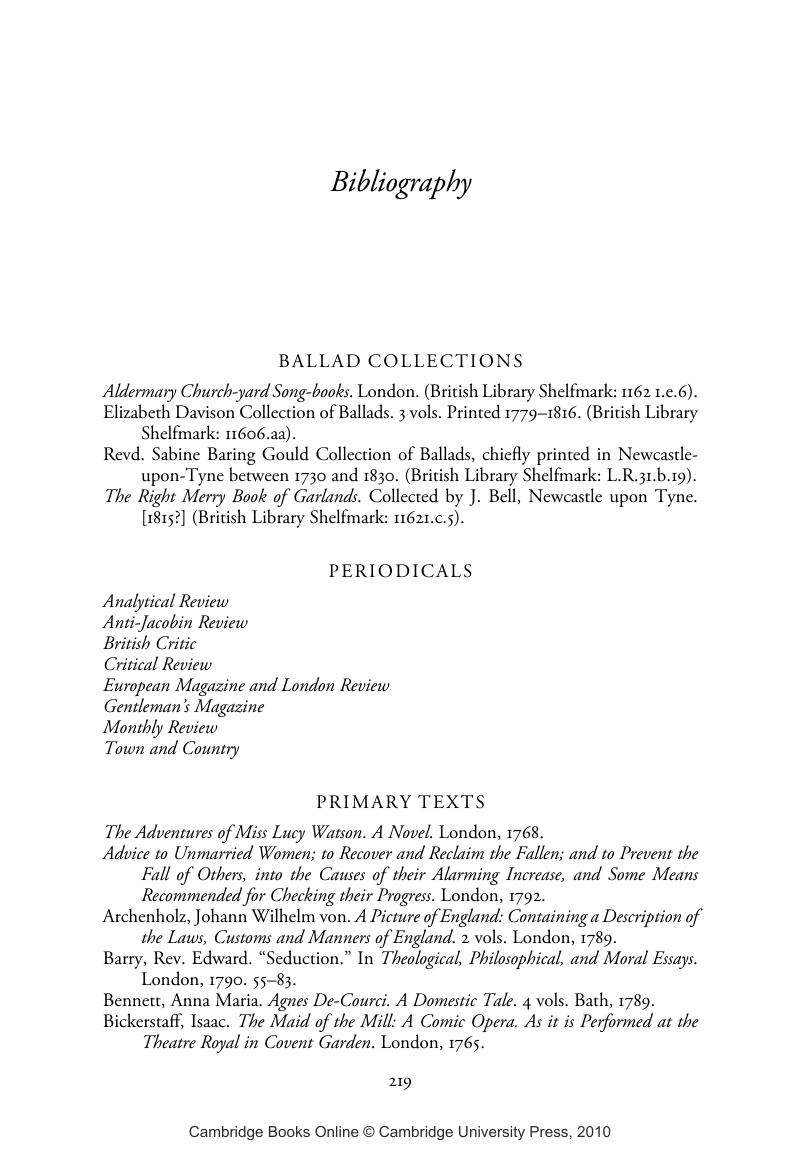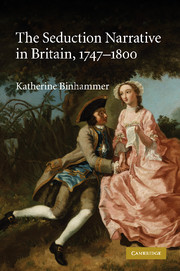Book contents
- Frontmatter
- Contents
- Acknowledgments
- Introduction
- 1 Knowing love: The epistemology of Clarissa
- 2 The whore's love or the Magdalen's seduction
- 3 After knowledge: Married heroines and seduction
- 4 Seduction in street literature
- 5 Melodramatic seduction: 1790s fiction and the excess of the real
- Notes
- Bibliography
- Index
- References
Bibliography
Published online by Cambridge University Press: 18 February 2010
- Frontmatter
- Contents
- Acknowledgments
- Introduction
- 1 Knowing love: The epistemology of Clarissa
- 2 The whore's love or the Magdalen's seduction
- 3 After knowledge: Married heroines and seduction
- 4 Seduction in street literature
- 5 Melodramatic seduction: 1790s fiction and the excess of the real
- Notes
- Bibliography
- Index
- References
Summary

- Type
- Chapter
- Information
- The Seduction Narrative in Britain, 1747–1800 , pp. 219 - 239Publisher: Cambridge University PressPrint publication year: 2009



